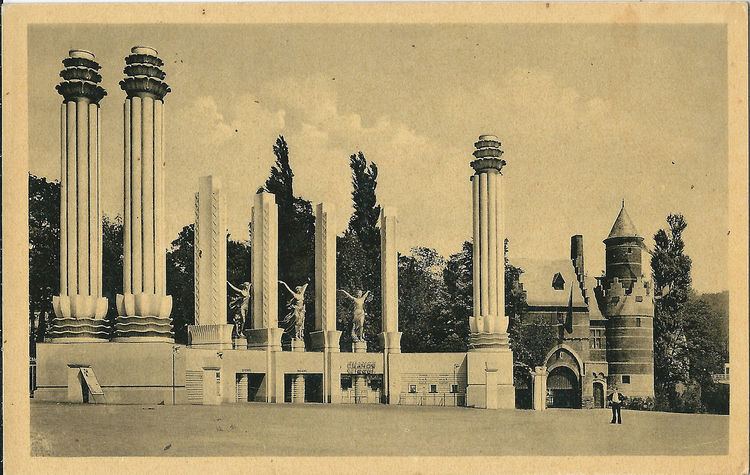BIE-class Universal exposition Visitors 20,000,000 | Building Palais des Expositions | |
 | ||
Category First category General Exposition Name Exposition Universelle et Internationale de Bruxelles Area 150 hectares (370 acres) | ||
The Brussels International Exposition of 1935 (French: Exposition Universelle et Internationale Bruxelles de 1935) a Universal exhibition held in Heysel, near Brussels in Belgium, between 27 April and 6 November 1935.
History
Officially sanctioned by the Bureau of International Expositions, twenty-five countries officially participated and a further five were unofficially represented. The theme was colonization, on the 50th anniversary of the establishment of the Congo Free State.
The fair attracted some twenty million visitors. Belgian architect Joseph van Neck was the principal architect of the fair and of the Art Deco Palais des Expositions (also known as the Grand Palais), with its interior concrete parabolic arches, and four heroic bronze statues on piers.
Among many other contributors, Le Corbusier designed part of the French exhibit; the Belgian modernist architect, Victor Bourgeois, designed the Grand Palace, the Leopold II Restaurant and the Soprocol Pavilion. The Belgian art exposition prominently displayed the work of contemporary Belgian artists, including Paul Delvaux, René Magritte and Louis Van Lint, boosting their careers.
The Palais des Expositions, and at least three other of the 1935 structures, were re-used for Expo '58 which was held at the same site in 1958.
